
1
First, pass one end through the top of the tailpiece.

2
Then, pass the other end of the tailgut through the other hole, top to bottom.

3
Pull both ends through and tightly close the loop at the top of the tailpiece.

4
Put the tailpiece on the instrument and gauge the length of the tailgut. The exact length will depend on your own thoughts about tailgut length, and, since that is not the point of this essay I will not get into the theories about tailgut length here. Use your own system to establish the length of the tailgut and mark the gut with a pencil just at the inside of the tailpiece. You will need to allow the length you want for the gut, plus about 3/4" for each end to cross over the other.

5
Next, burn each end of the gut about 1/8" down.

6
Now, set the tailpiece aside and prepare the stitching gut. Burn one end of the stitching gut.

7
Then, loop this burnt end.

8
What we want to do is to make a simple slip knot. So, bring the burnt end around the loop, making a hole which you will stick the burnt end through.

9
Pull the hole tight against the burnt end, so that the knot will slide up and down the long length of stitching gut, making the loop smaller and larger.

10
Next, cross the ends of the tailgut over each other and get a feel for the length, as pictured below.

11
Then, Loop the slip knot around one end of the tailgut and pull tight.

12
Next, replace the ends of the tailgut in the crossed-over position, and bring the stitching gut around the back of the bottom piece and up the near side.
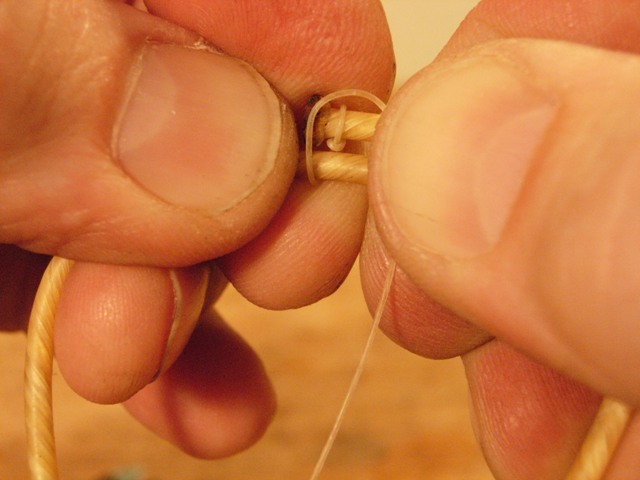
13
Create a loop by bringing the stitching gut down the near side.
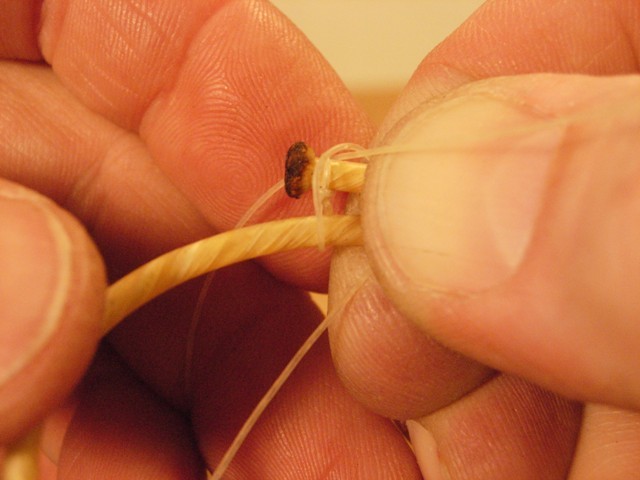
14
Bring the end of the stitching gut around to the back of the tailgut and up through the loop on the near side.

15
Pull the stitching gut up, making the loop tight.
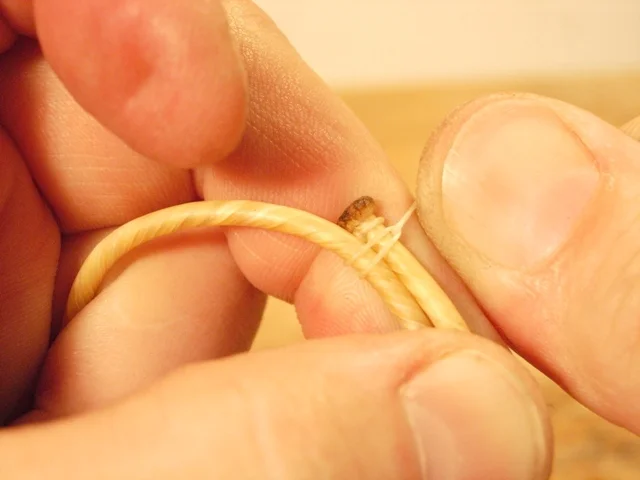
16
So that it looks like this.
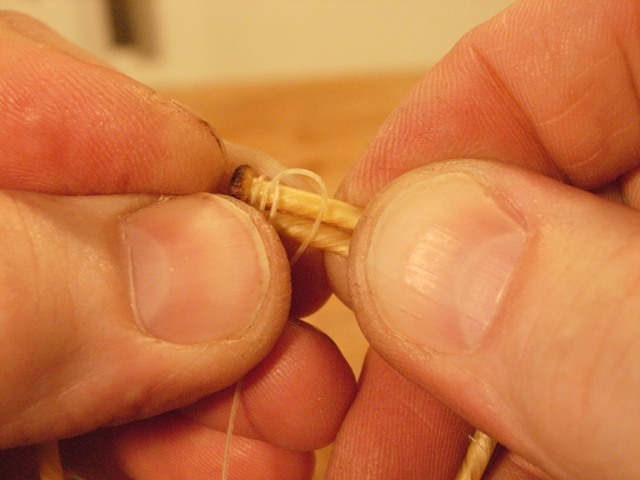
17
Now, make another loop down the near side.
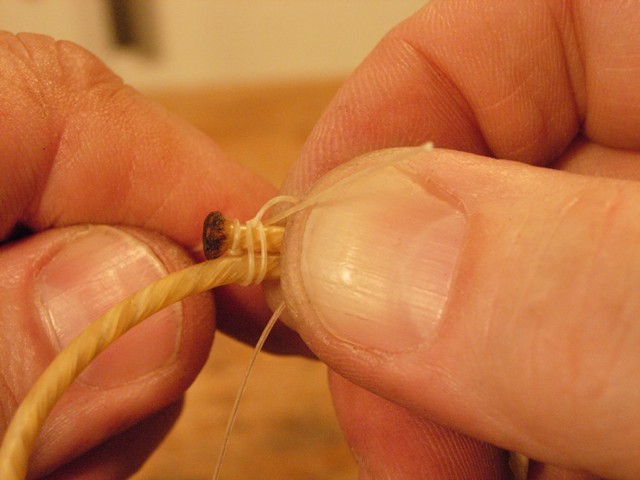
18
Again, bring the stitching gut around to the back side and through the loop.
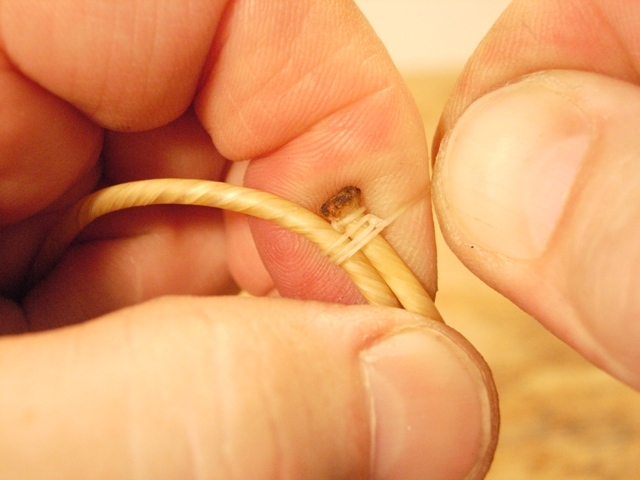
19
And pull this loop tight.
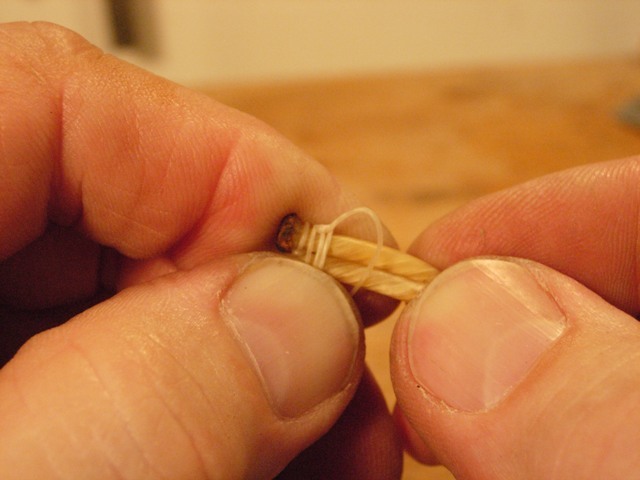
20
Make another loop down the front side,
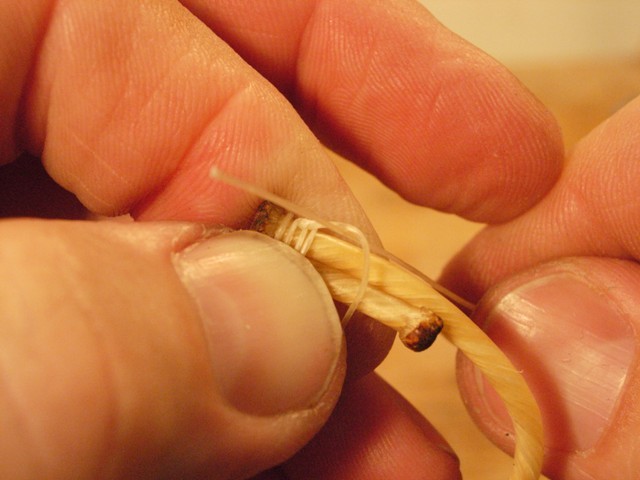
21
And bring the stitching gut around and through the loop.
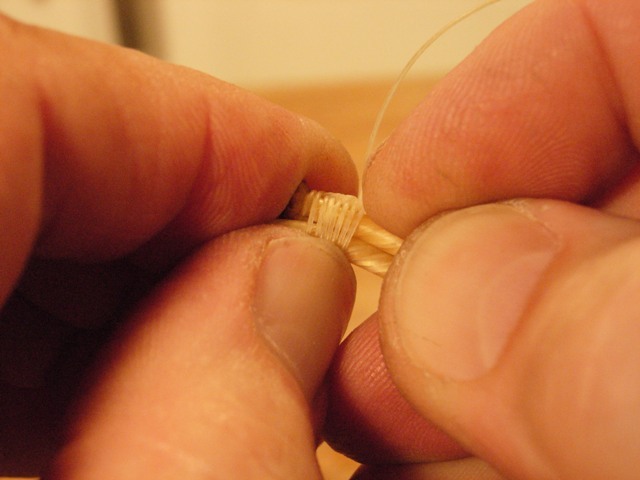
22
Repeat this process until you have covered the space between the two burnt ends. Once every four loops, or so, you should compress the stitches together so that they are tightly compacted.

23
When you have completed the stitches, pull the last one tight.
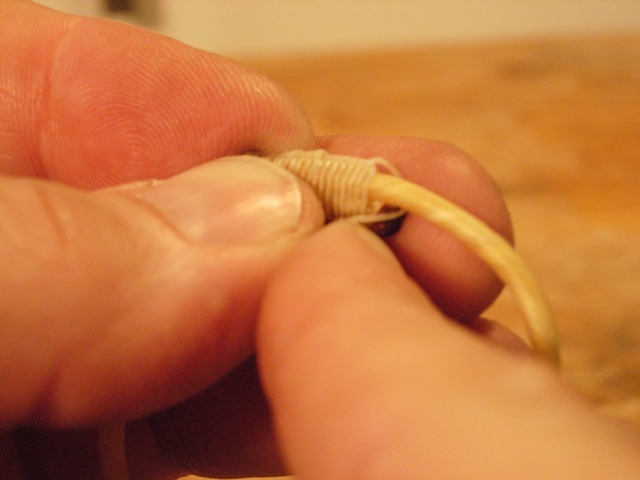
24
And bring the stitching gut around the only the top tailgut piece.
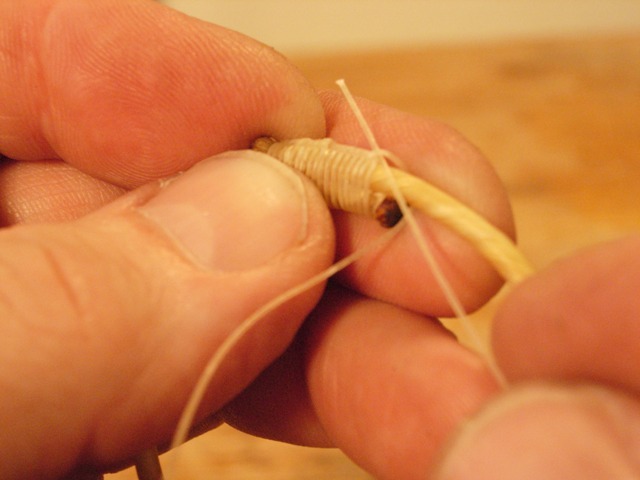
25
Bring the end of the stitching gut through the loop you have created.
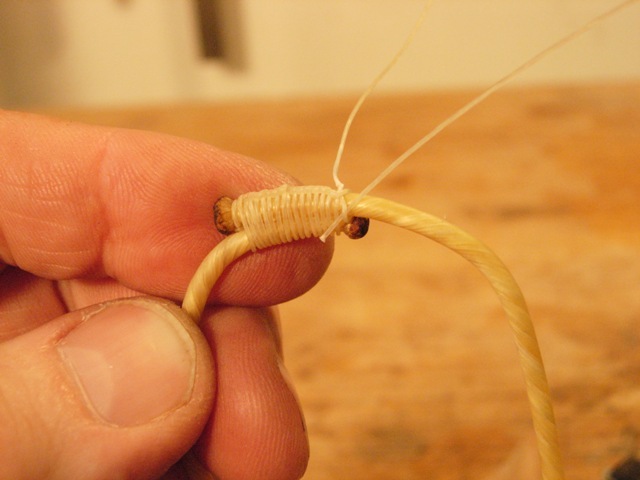
26
Pull this tight, but leave just enough space for the stitching gut to pass through.
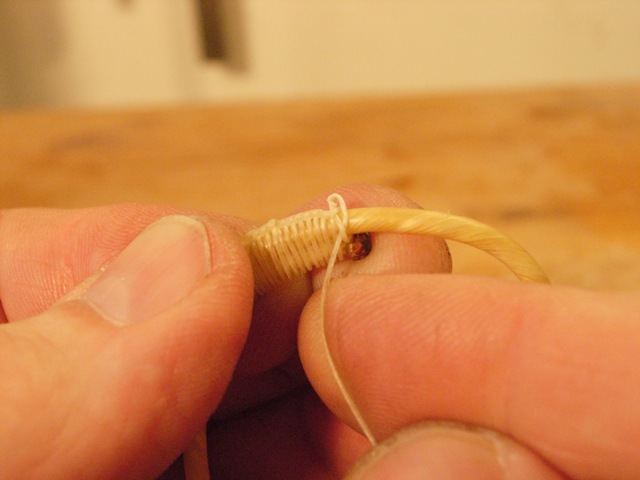
27
Thereby creating a cinch knot.
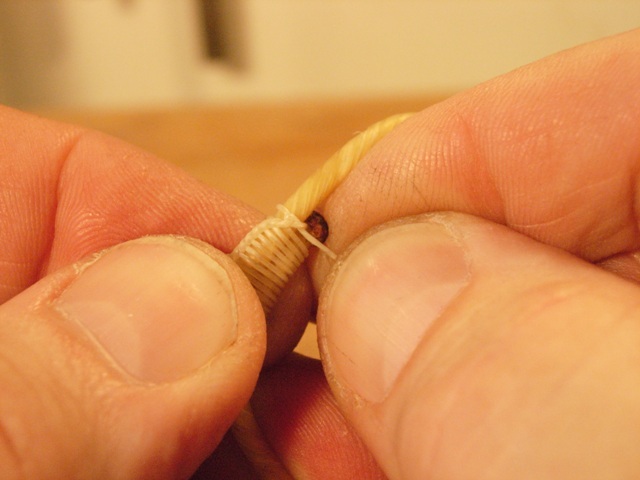
28
And then, pull this tight.
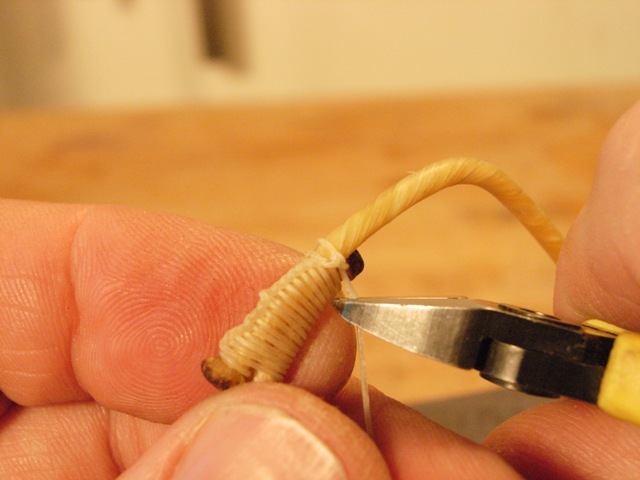
29
Clip the end of the stitching gut to a length of about 1/8"
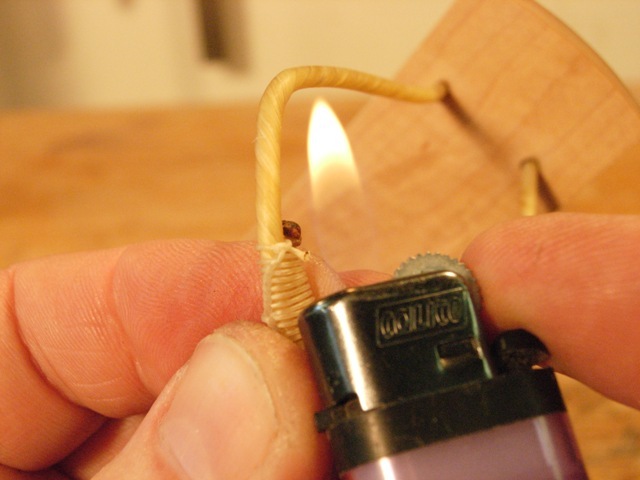
30
Burn the end of the stitching gut down to the wrappings.
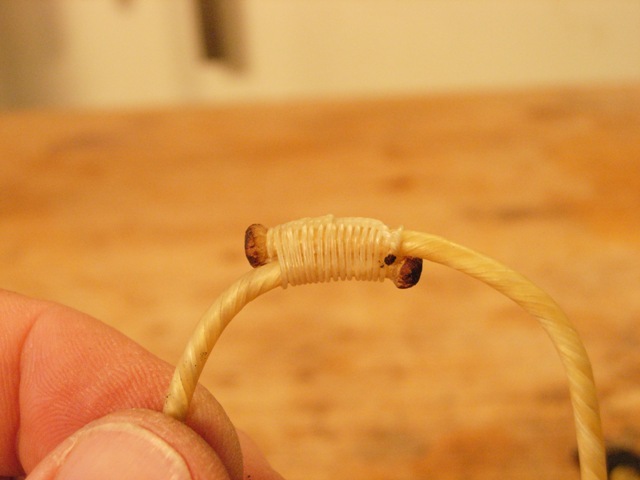
31
Your tailgut should now look something like this.
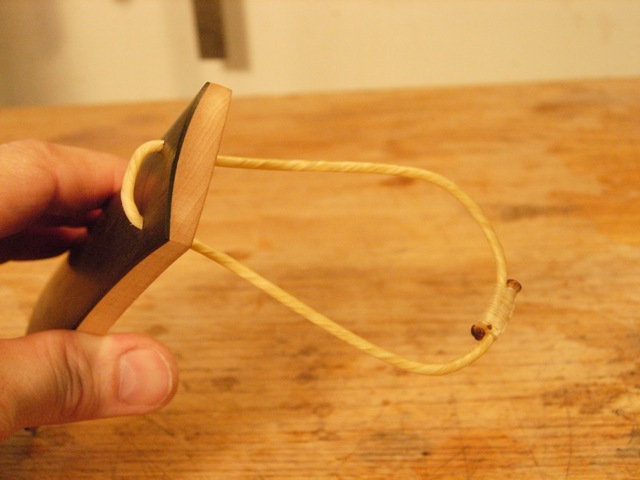
32
And now it is ready to go on the instrument. When the tension has been on the tailpiece for a while, the wrappings will compress tightly.
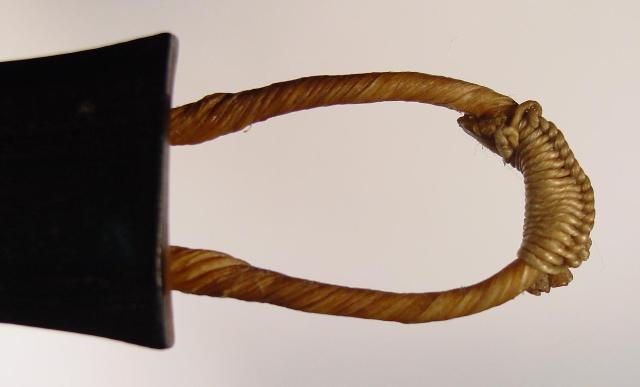
E 903
Below is a picture of the E 903(3) tailpiece gut in the Cite de la Musique in Paris, France.

































